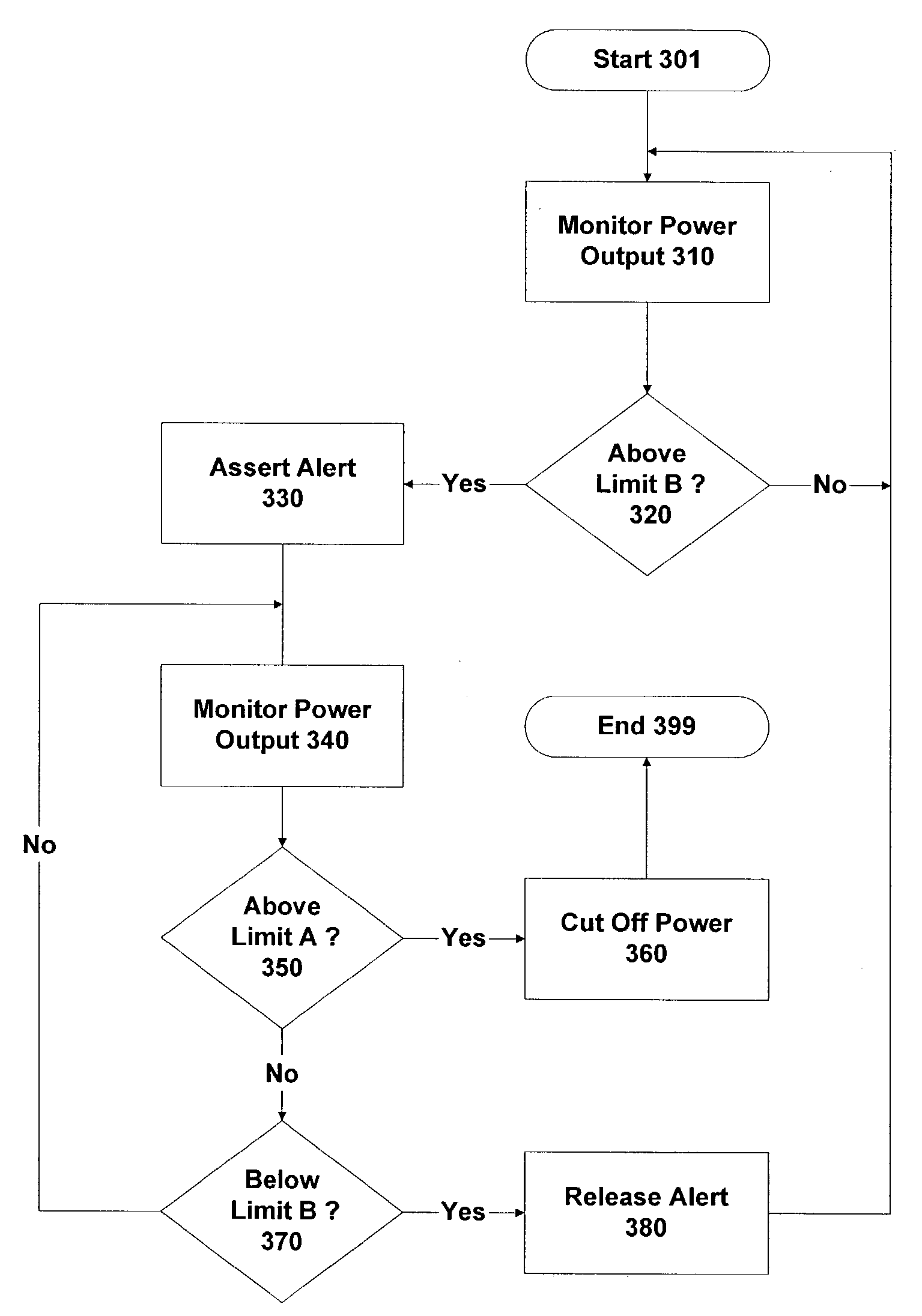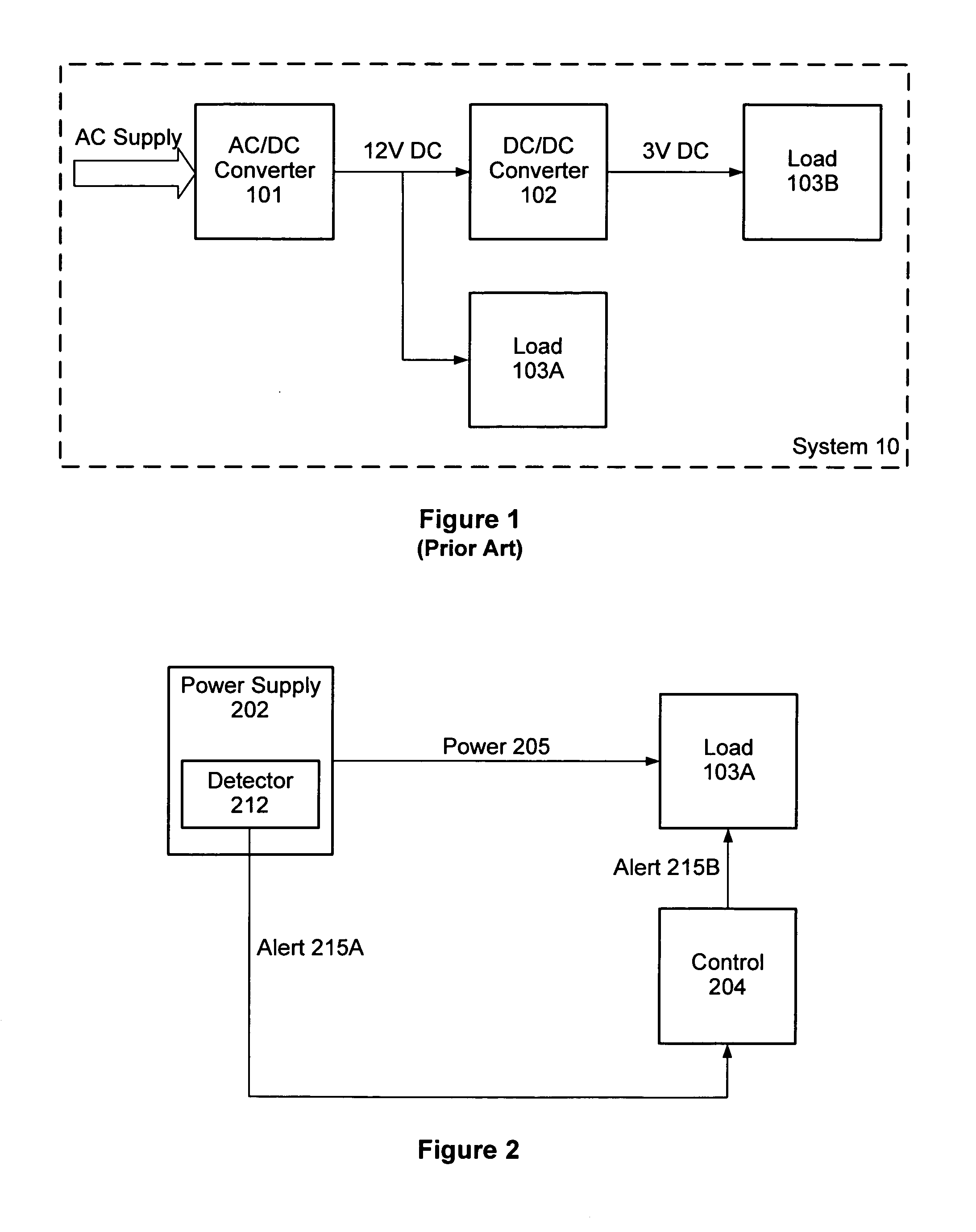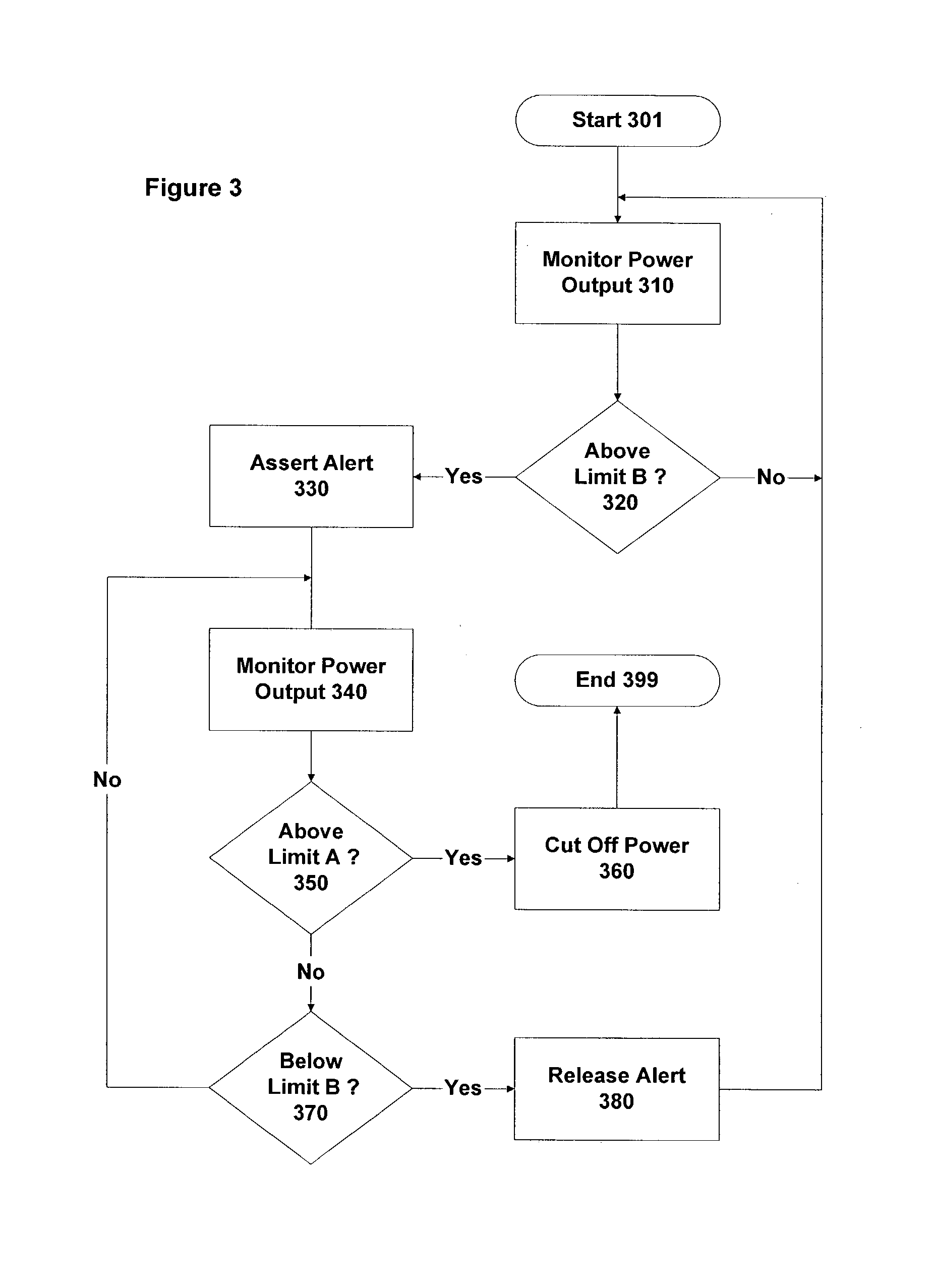Method and apparatus for supplying power in electronic equipment
- Summary
- Abstract
- Description
- Claims
- Application Information
AI Technical Summary
Benefits of technology
Problems solved by technology
Method used
Image
Examples
Embodiment Construction
[0041]FIG. 2 is a schematic diagram of a power supply configuration in accordance with one embodiment of the present invention. Power supply 202 provides power 205 to load 103. Typically power supply 202 corresponds to DC / DC converter 102 in FIG. 1, but it can also correspond to AC / DC converter 101, or to any other appropriate power supply device.
[0042]Included within the power supply 202 is a detector 212 that monitors the power output 205 from the power supply 202 to load 103. Detector 212 triggers when the power output from supply 202 moves towards the top end of the design capabilities of power supply 202. Note that this trigger point is still short of the level at which power supply 202 may be damaged, and at which an automatic cut-out (not shown in FIG. 2) is typically implemented.
[0043]If the output from power supply 202 does go beyond this trigger point, then detector 212 asserts an alert signal 215A. This alert signal 215A is passed to control unit 204, which in turn forwar...
PUM
 Login to View More
Login to View More Abstract
Description
Claims
Application Information
 Login to View More
Login to View More - R&D
- Intellectual Property
- Life Sciences
- Materials
- Tech Scout
- Unparalleled Data Quality
- Higher Quality Content
- 60% Fewer Hallucinations
Browse by: Latest US Patents, China's latest patents, Technical Efficacy Thesaurus, Application Domain, Technology Topic, Popular Technical Reports.
© 2025 PatSnap. All rights reserved.Legal|Privacy policy|Modern Slavery Act Transparency Statement|Sitemap|About US| Contact US: help@patsnap.com



